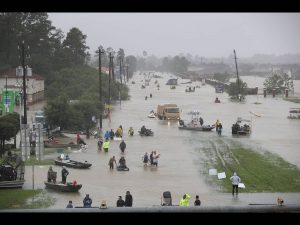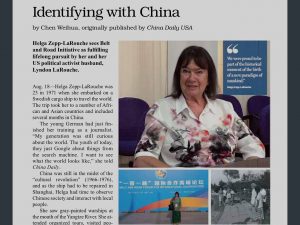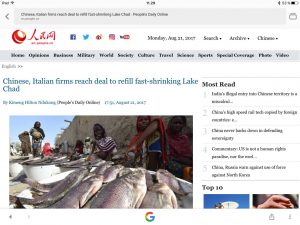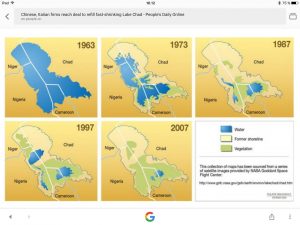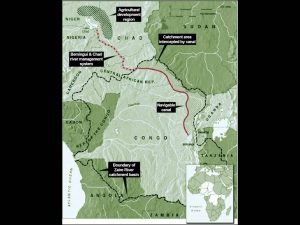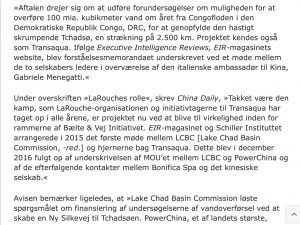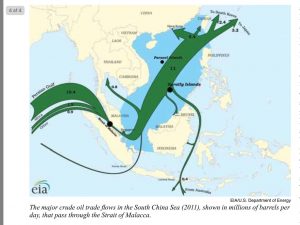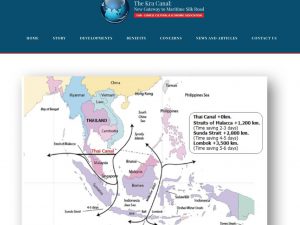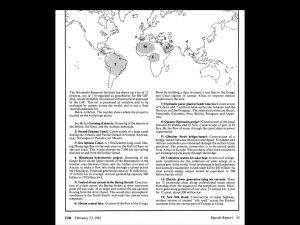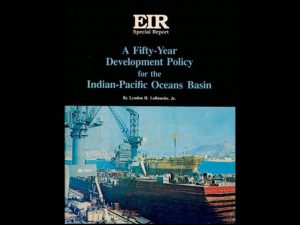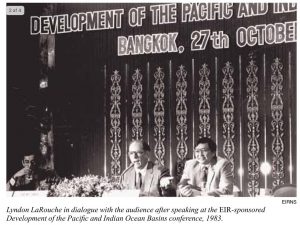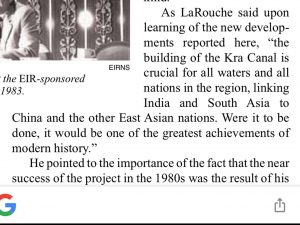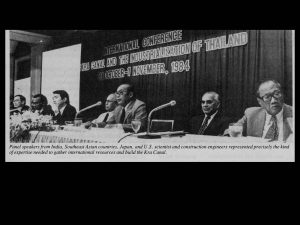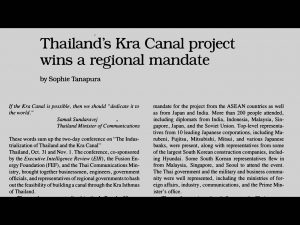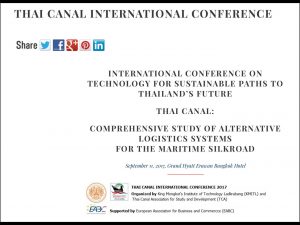… denne orkan Harvey, der virkelig er uden fortilfælde mht. ødelæggelser … dette må være momentet for at initiere en fuldstændig ny holdning hos amerikanerne og vores nationale regerings skifte til en helt anden politik, og det er formålet med den nøderklæring, vi har udstedt.
… det må genkalde en holdning, som vi mistede i dette land, der går tilbage til mordet på John F. Kennedy, men faktisk går tilbage til Franklin Roosevelts død. Og den måske mest signifikante case study, vi kan anvende, er TVA, som du nævnte, Tennessee Valley Authority.
Vært Matthew Ogden indleder webcastet med at oplæse Lyndon LaRouches erklæring, »Ikke flere Houston-katastrofer: Lyndon LaRouche siger, hvad det er, der må ske ’lige med det samme’«
Det efterfølges af en rapport fra repræsentant for LaRouche-bevægelsen i Texas, Brian Lantz, om den aktuelle situation i Houston og en analyse af de nødvendige forholdsregler, der må tages.
Herefter vises et klip fra en film, der blev produceret under Franklin Roosevelts præsidentskab, om det store infrastrukturprojekt, kaldet TVA – Tennessee Valley Authority.
Her følger en dansk oversættelse af dette videoklip og Matthew Ogdens kommentarer.
Efter dette følger komplet engelsk udskrift af hele webcastet.
Min. 31:20 (FDR-klip minuttal 35:15):
Brian Lantz (slutning): Hvor skal pengene komme fra? Det er selvfølgelig det forkerte spørgsmål at stille. Spørgsmålet er, hvad er det for institutioner, vi må skabe? Det er præcist, hvad LaRouche foreslår: Glass-Steagall, statslig kredit, en nationalbank, der kan finansiere strømmen af statslig kredit til at bygge de nye TVA’er, de nye projekter, der kræves for at sikre ikke alene kysten her, men også for at påbegynde en stor, økonomisk genrejsning af USA til dets position i verden.
Matthew Ogden: Netop, og denne orkan Harvey, der virkelig er uden fortilfælde mht. ødelæggelser, som du gjorde det meget, meget klart, Brian – dette må være momentet for at initiere en fuldstændig ny holdning hos amerikanerne og vores nationale regerings skifte til en helt anden politik, og det er formålet med den nøderklæring, vi har udstedt.
Og, som du sagde, så må det genkalde en holdning, som vi mistede i dette land, der går tilbage til mordet på John F. Kennedy, men faktisk går tilbage til Franklin Roosevelts død. Og den måske mest signifikante case study, vi kan anvende, er TVA, som du nævnte, Tennessee Valley Authority.
Hvis vi går tilbage til før Franklin Roosevelt og før New Deal, havde vi hele områder af landet, der var underkastet såkaldte naturkatastrofer, og som simpelt hen var forsømte. Det måske mest signifikante område i landet, det mest bemærkelsesværdige, var den såkaldte Tennessee-dal. Det er meget ironisk, at Tennessee-dalen, der er et helt område ikke blot i Tennessee, men omfatter alle disse tilgrænsende stater, er det område, der har den største totale regnmængde på det amerikanske kontinent.
Og hvad er så den årlige regnmængde i Tennessee-dalen? Den er på 51 inches (ca. 130 cm) om året; det, vi netop har oplevet i Houston, er 51 inches på fem dage eller mindre. Det er simpelt hen en svimlende mængde vand, der kom ned fra himlen! Men Tennessee-dalen var også udsat for meget lange perioder med voldsomme regnmængder, for det meste som følge af orkaner, der spredte sig – virkningen af orkaner, der kom op fra Golfkysten (den Mexicanske) og så fortsatte ind over denne centrale, sydøstlige del af USA.
Hvad skete der? Franklin Roosevelt, der blev citeret i vores nøderklæring, sagde, at det, der behøvedes, er »handling, og handling nu. Nationen kræver handling«. Han sagde: Vi vil ikke tillade denne ødelæggelse, som Tennessee-dalen oplever år efter år, og som skaber et af de mest forarmede områder i hele verden: Dette var Appalacherne – evnen til at læse og skrive var i bund, malaria, det øverste jordlag, der blev vasket bort. Man havde virkelig vilkår som i den Tredje Verden, lige midt i kontinental-USA. Roosevelt sagde, nej, vi vil gøre noget, som ingen før har gjort, og vi vil ikke blot forsøge at kontrollere en enkelt flods strøm, men vi vil tage et helt flodbækken, og vi vil ikke alene kontrollere dette vand hydrologisk, men vi vil indsamle energien fra dette vand og sætte det til at arbejde til gavn for de mennesker, der bor dér.
Jeg har en video, jeg gerne vil vise vore seere, et ca. 4 min. langt klip, som blev lavet af Roosevelt-administrationen. Den blev ironisk nok produceret det år, Roosevelt døde, i 1944. Men den viser, hvad Tennessee-dalen var udsat for, og det bør faktisk minde jer om de videoklip, I netop så fra Houston; men den viser også, hvad der blev gjort fra Roosevelt-administrationens side og filosofien, der lå bag TVA. Her kommer klippet:
Fortæller: Ødelæggelse fra himlen. Sådan var det, år efter år, i et glemt område af USA. Dette var den ødelæggelse, der var forårsaget af grådighed og neglekt, med mænd, der arbejdede alene og uden hjælp mod naturens kræfter. Landbrug, byer, industri – smadret; hundreder druknede, tusinder blev hjemløse. Flodens energi, der gik til spilde – og menneskenes energi ligeså.
[Landmand] Henry Clarks problemer var 3 millioner amerikaneres problemer i Tennessee-dalen. Det blev 130 millioner amerikanere i 48 staters direkte anliggende, en udfordring for demokratiet og dets evne til at drage omsorg for sine egne folk.
Tennesseefloddalen [kort] ligger i det sydøstlige USA. Det dækker et område på 40.000 kvadratmil, næsten lige så stort som England. Det var et problem, der handlede om genopbygning; genopbygning af land og af mennesker. Demokratiet bestod prøven: Det fandt mændene, der kunne overvåge jobbet – James P. Polk, national senator fra det vestlige USA; Harcourt Morgan, præsident for Tennessees Universitet, og som havde udarbejdet et landbrugsprogram for hele området; David Lilienthal, administrator og fortaler for en lov om kooperativ elektricitet; George Norris, en stor, amerikansk statsmand, der længe havde drømt om regional planlægning, om at etablere et nationalt eksperiment i én region, der kunne fungere som målestok for alle regioner. Dette var planen [kort over progressiv udvikling], at tøjle floden gennem en række gigantiske dæmninger, der kunne kontrollere oversvømmelserne, og åbne floden for sejlads fra dens udspring til dens bifloders tilstrømning; at lade fordelene ved moderne videnskab og forskning komme farmerne til gode; at hjælpe dem til at kontrollere vandet på deres jorder og genoprette jordens frugtbarhed, at genbeplante millioner af acres med skov på de hærgede bjergsider, at udvinde områdets mineralresurser; at bruge elektriciteten, skabt af dæmningerne, til at udvikle og rehabilitere industri i byerne, at føre elektricitet til landbrugsejendommene gennem et landligt kooperativ; og frem for alt, at bevise, at menneskelige problemer kan løses gennem fornuft, videnskab og uddannelse.
Tennessee-dalen skulle atter engang blive en fremskudt grænse, denne gang for at blive udviklet, ikke udplyndret; denne gang ikke til fordel for de få, men for de mange, som boede dér. Disse mennesker var de nye pionerer, arkitekterne, forsknings-kemikerne, landbrugseksperterne, elektricitetsfolkene, ingeniørerne, der designede vandkraftværker: Deres metode var at kontrollere naturen, ikke ved at trodse den som i den ødsle fortid, men ved at forstå den og tøjle den til gavn for menneskeheden …
(Slut video)
Ogden: Det var sådan, amerikanere plejede at tænke; dette var Franklin Roosevelt-administrationen, dette var New Deal. Lad mig blot lige gentage for jer, hvad I netop har hørt: Fortælleren sagde, hvad var formålet med Tennessee Valley Authority, dette projekt over alle projekter? »Frem for alt, at bevise, at menneskelige problemer kan løses gennem fornuft, videnskab og uddannelse. Tennessee-dalen skulle atter engang være en fremskudt grænse … for at blive udviklet … ikke til fordel for de få, men for de mange … Disse mennesker var de nye pionerer … Deres metode var at kontrollere naturen, ikke ved at trodse den … men ved at forstå den og tøjle den til gavn for menneskeheden …«
Det er sådan, amerikanere tænker.
Engelsk udskrift:
HOUSTON, WE HAVE A SOLUTION’: WHAT MUST BE DONE NOW
MATTHEW OGDEN: Good afternoon. It’s September 1, 2017. My
name is Matthew Ogden, and I’d like to welcome you to our Friday
evening webcast here on larouchepac.com; our strategic overview
for the end of this week.
This has been a very dramatic week, and I’ve asked Brian
Lantz, who is a LaRouche PAC organizer in Houston, Texas to join
us for our broadcast here today. He’s been on the ground; thank
you Brian. Welcome. He’s been on the ground there in Houston.
He survived Hurricane Harvey, and he has seen firsthand the
devastation. Those of you who were on the LaRouche PAC Fireside
Chat last night, got to hear a preliminary overview report from
him. Also, Brian Lantz will be the featured guest at the
LaRouche PAC Manhattan Town Hall meeting tomorrow afternoon in
New York City on Saturday. But we’ve asked Brian here to review
with us the extent of the devastation and the necessary solutions
that Hurricane Harvey should prompt us to usher in for the
nation.
Before I get to Brian, I am going to read to you in full the
emergency policy statement that has been issued by LaRouche PAC,
which is available at the LaRouche PAC website. You’ll see the
text here right on the screen from larouchepac.com [Fig. 1]. The
title of this statement is “No More Houstons! Lyndon LaRouche
Says What Must Happen Right Now!” So, the statement reads as
follows:
“The catastrophe in Texas is a man-made disaster
accomplished by the criminal negligence of this nation’s elected
officials, who have continued to support Wall Street’s
speculative economy and imperial ambitions while arguing that the
nation cannot afford to rebuild and replace its ancient and
broken-down economic infrastructure. For the third time since
2005, major American cities have been flooded and their people
devastated, because the plans for new infrastructure to protect
the people, requiring tens of billions in investments, have been
ignored and turned down. Hurricane Harvey now looms as the worst
national disaster in our nation’s history and it is a disaster
which did not have to happen.
“In 2005, Hurricane Katrina killed nearly 2,000 people and
wreaked $130 billion in economic losses. Only then, slowly, new
flood-control and sea gate infrastructure was built — at last —
for New Orleans, at a fraction of the human and monetary costs of
the damage inflicted by the storm. How many unnecessary deaths
and suffering could this project have averted?
“Four years later, the American Society of Civil Engineers
met in Manhattan to discuss several storm surge barrier options
for the New York City region. The estimate for the largest of
these was $9 billion. The government decided to do nothing. Then,
in 2012 Superstorm Sandy killed more than 100 people and caused
$65 billion in economic losses. New York area residents now are
going through a ‘Summer of Hell’ as the 100-year-old regional
transportation system, flooded and damaged five years ago, also
was not repaired or replaced at the necessary pace.
“The staggering economic and human suffering caused by
Hurricane Harvey in the Texas and Louisiana Gulf region are not
yet known, and will grow in magnitude as the water recedes; but,
what has been known for many years, is that Texas Gulf cities are
flood-prone, and have repeatedly flooded. Yet, no flood control
or storm protection infrastructure has been built since the end
of World War II. Plans for a new system for the Houston area had
been drafted, but their $25 billion cost was deemed ‘too high’ a
price tag for our Wall Street-dominated agencies and elected
officials. Now, hundreds of billions of dollars, and priceless
human lives, are lost.
All of these disasters, and others in the recent period, could
have been averted for a fraction of their eventual cost in lost
wealth, let alone in lost lives. The media insist to Americans
that each city’s disaster is caused by its particular economic
habits, its choice of location, its squabbling jurisdictions, its
ignoring of climate change, or its being close to water! This is
nonsense. Wall Street, which has been bailed out repeatedly to
the tune of trillions of dollars, with nothing but increased
impoverishment of the American people to show for it, must no
longer be allowed to dictate the economic policy of the United
States of America.
“|’The nation calls for action, and action now!’ in
President Franklin Roosevelt’s words. During his presidency, and
through the 1940s, the new infrastructure to prevent such
‘natural disasters’ — such as the Tennessee Valley Authority —
was funded by national credit, as through the Reconstruction
Finance Corporation and the Works Progress Authority.
“Hurricane Harvey drowning cities in East Texas should be
the national alarm which ends 70 years in which the country has
been without any such national credit institutions.”
The next subhead is titled “A Sea Change Is Required”.
“Lyndon LaRouche on August 30 called for a ‘sea change’ in
policy ‘right now.’ He called for the immediate creation of a
national credit institution for new, high-technology
infrastructure, like that employed by Franklin Roosevelt when the
vast majority of our current infrastructure was built. There is
no alternative to creating a national credit institution, like
that employed by Alexander Hamilton and in accord with our
Constitution, to fund the necessary trillions in new
infrastructure investment.
There must also be action on reinstating Glass-Steagall banking
separation right now, as a new financial crisis looms and Wall
Street speculation continues to prevent actual productive
investment. Allowing Wall Street to eliminate the Glass-Steagall
Act in the 1990s led to a crash that caused {$10 trillion} in
lost wealth, mass unemployment, and untold loss and shortening of
human lives.
“LaRouche insists that his ‘Four Economic Laws To Save the
Nation’ must be implemented right now if this country is to
recover from Hurricane Harvey and prevent similar disasters
stemming from our rotting physical economy now ticking like a
time bomb:
1. Re-institute Glass-Steagall: break up Wall Street and its
power;
2. Create national credit institutions based on FDR’s
Reconstruction Finance Corporation and Alexander Hamilton’s
national banks;
3. Invest the credit in new infrastructure with frontier
technologies, including high-speed rail, fourth-generation
fission and fusion power technologies, and modern storm
protection and water management systems;
4. Adopt a fusion-driver ‘crash program’: Let a great
expansion of NASA space exploration provide a driver for
productivity and productive employment.”
Then, the final section is titled “A New Paradigm Takes
Hold”.
“China’s Belt and Road Initiative, an international program
of new rail ‘land-bridges’ and great projects of infrastructural
development, offers immediate cooperation for the credit and the
building of a new infrastructure in the United States. This
initiative is now moving on great projects they have long
identified as absolutely essential, such as the Kra Canal in
Southeast Asia, and the revival of Lake Chad in sub-Saharan
Africa; projects long championed by Lyndon LaRouche and his wife,
Helga Zepp-LaRouche.
“Helga and Lyndon LaRouche are leading a national
mobilization focused on moving President Trump to immediately
bring America into the China-initiated Belt and Road Initiative
of worldwide building of new infrastructure. That ‘win-win’
initiative, and the United States joining in its worldwide
projects and also building its own new infrastructure, means the
revival of the United States as an industrial power.”
The statement goes on to quote Helga Zepp-LaRouche in her
speech to the Manhattan conference on August 26th. Then, after
that quote, it concludes by saying:
“LaRouche PAC has taken the responsibility to drive
President Trump and the Congress into this action. But this is
also the responsibility of all Americans that think of themselves
as citizens: those who have been actively supporting the
President, or supporting Sen. Bernie Sanders; those who supported
no one, out of disgust at the manipulation, and continued
manipulation of the election, but who have wanted a drastic
change in the deindustrialization and Wall Street speculation
policy ruling the country; those who know people killed, or made
homeless and impoverished by Wall Street’s induced ‘natural
disasters.’ All must now act and make their voices heard.
Because, watching what is happening, again, to great American
cities, leads anyone sane to the same conclusion: {There is no
alternative}.”
So, that statement, which is available in full on the
LaRouche PAC website, again, under the title “No More Houstons!
Lyndon LaRouche Says What Must Happen Right Now!” is available
for you to circulate. That is our call to action, which we’re
here to discuss today.
So Brian, I’d like to just introduce you and give you a
chance to give us an overview of what the conditions are on the
ground in Houston; what the impact is on the national economy,
and what must be done. While you begin, we’re just going to play
some drone footage that was taken and was posted on Facebook by a
user chaseboogie; and we thank him for the permission to use this
footage. It will just give our viewers a very visceral
on-the-ground sense of what exactly the conditions look like
there in Houston as you speak. So, Brian, thank you for joining
us here today.
BRIAN LANTZ: Good to be here. I think first of all, I
should emphasize that this hurricane and hydrological disaster is
still unfolding. Just a matter of a few hours ago, this is
Friday; Mayor Sylvester Turner requested more evacuations from
the Atticks Reservoir area, the Atticks Dam area, because of the
continued releases of water in the spillway. Uncontrolled
releases into the area, which are necessary to relieve pressure
behind these dams. These dams are in Houston on the Buffalo
Bayou. Here today, the sun is out; but that doesn’t change
really the picture you’re seeing in this video, this drone
footage. Just the extent, and what you’re seeing really is only
a small portion of Houston; the devastation extends over 50
counties — {50 counties}. An area encompassing some 11 million
people.
Now, besides continued rising water on the Buffalo Bayou —
slowly rising; which runs through Houston itself, right through
the downtown area and so forth. That’s what this footage largely
covers is the area around downtown. You also have rising water
still coming down the San Jacinto River, but also from the
broader San Jacinto Basin, draining into the San Jacinto River
and on down to the ship canal. You have the Brazos River and the
Colorado River on the west side of Houston; these are still
continuing, particularly the Brazos, to rise. There’s been
ruptures of the levees along the Brazos River; that’s something
they’re combatting. There are mandatory evacuation orders and so
forth that have been placed in parts of that for days.
This all continues to unfold. Smaller towns, over 300
smaller towns and cities are dramatically affected. Off to the
east, roughly let’s call it two hours east of Houston down I-10,
going towards New Orleans, is Beaumont and Port Arthur. You may
have been seeing some footage from there. Beaumont lost its
water supply. This is a city of 120,000 people; they’ve lost
their water supply. They’re now evacuating their evacuation
centers because of the rising Natchez River. This is a disaster
that’s still unfolding. Beaumont is largely under water. Port
Arthur, next door, is under water. Rescue efforts are ongoing.
Here in Houston, we have over 30,000 people registered in
various evacuation centers around the city. But of course, far
more are staying with neighbors or relatives. You can imagine,
hotels and so on and so forth. Also, out of some of the
surrounding areas down by the coast; Dickinson, for example. You
had military cargo planes flying people out of the area through
Galveston up to Dallas. This is still all unfolding.
I guess I could give a couple of just simple examples. It’s
thought that at least 500,000 cars are lost in the flooding. I’m
sure that’s an underestimate when you take in the broader area.
I think those figures are regarding Houston itself.
I think also to go to the heart of this, you’ve got to go to
the industrial side of this picture. So, I’ll do that in just a
second. But first, I want to just bring forward the other side
of this; which there has been reporting on. That is, the
outpouring of aid that Houstonians and Texans have provided to
their fellow citizens and our neighbors from as far away at least
as New York. I believe the first responders who came into
Houston were from New York City; fire teams from New York City to
take part in the rescue. So, we have them here from Kansas, we
have them of course Fort Worth, Texas; 4.5 to 5 hours to the
north. We have them from Dallas. Hundreds of police have now
come in, arriving really as brigades into the city to relieve
policeman who, up until yesterday, hadn’t slept for days and
days. A tremendous rescue effort; you might have heard about the
“cajun navy”; loosely organized, bringing over their boats, their
high-rise trucks and behind them pulling their boats. This is
thousands of people, and hundreds and hundreds of boats coming
in, that have been playing a critical role at the request of law
enforcement, of the mayor, or the first responders here in
southeast Texas.
So, if you go to some of the slides, just the first [Fig. 2]
you have a still of some of the damage in downtown Houston. I
think if you follow that up, you’ll see what Hurricane Harvey
looked like coming in [Fig. 3]. Partly I’m putting that up just
to give you a sense of the extent of this hurricane in terms of
its length and breadth. Those outer bands — that picture was
taken basically at landfall down near Rockport, which is just
close to Corpus Christi to the south. Those outer bands,
particularly as you see them on the east side; this is the “dirty
side” as they say, of the hurricane. This was coming in
simultaneously more or less into the rest of the coast to the
east of landfall there in Rockport; which was, of course, this
small town just devastated along the coast.
If you go to the next picture [Fig. 4], I’m putting these up
partly to give you a sense of the geography in terms of where
we’re talking about relative. You see there the state of Texas
off to your left, the broader state of Texas. You see the swath
of area; that was a prediction early on. You see the top of the
monitor there, the peak they’re expecting is 15 inches [of rain].
Well of course, we got between 30 and 50 inches in rainfall in
the course of just a few days. The next slide [Fig. 5] gives you
a sense of how this process has then trailed off to the east up
through Louisiana; now moving off into Arkansas and Tennessee.
But again, that’s to give you just a kind of sense of the
geography of this. And all along there, you’re talking about,
across the bottom, you see the Gulf Coast.
So, having spoken a bit about the tremendous effort and so
forth, I want to return to the physical economic impact of this,
if I can. Think of a compromised human body from disease or
aging, you name it. Then think of that body being slammed by
some new effect, a shock to the system. You have to ask, how
many shocks can that person take? Well, think of our US economy
and the world economy in a different way, but related, in that
context. For example, as some of you know, the Colonial
Pipeline, which is the largest pipeline in the United States,
which carries oil and gas and so forth; that an other pipelines
have stopped because the refineries are shut down. 20% to 30% of
the nation’s refining capacity is right now shut down here along
the Gulf Coast. Particularly in Houston, but extending over to
New Orleans, Baton Rouge, the South Louisiana port — which is
the largest port by tonnage in the United States. All of these
are affected to varying degrees.
That means that New York right now is not getting oil from
the major pipeline serving the New York area; but also serving
Atlanta, Washington DC, and so forth. Gas prices are spiking and
so forth and so on as a result of this. That pipeline, the
Colonial Pipeline, is not going to be back online until at least
the end of the weekend. So, this is not disconnected; we’re
talking about one systemic process here, already weakened by the
horror stories of the Bush and Obama years, the financial
blow-out of 2008, Wall Street’s predatory speculation. The
British Empire’s choking off of the American System increasingly
since the passing of Franklin Roosevelt in 1944. So, this is
having consequences across the United States.
Just to give you a sense of this, if you skip forward to the
last slide [Fig. 6], you’ll see a map of the ports along the Gulf
Coast. Just so you have a fair assessment of this, eight of the
twelve largest ports in terms of tonnage are along this coast,
the third Coast, the Gulf Coast. You see those in red, but also
now of course, Port Arthur; those ports are all still closed,
including the little barge port of Victoria, Texas. Corpus
Christi is a major port. You see Houston, it’s also next to it
in that same block as Texas City, which is a separate port also
on the Galveston Ship Canal to Houston. So, those ports are all
closed down. This is a long-term disruption. Rail lines are
disrupted, the Union-Pacific Corporation, Berkshire Hathaway’s
BNSF — Burlington Northern Santa Fe — they are currently closed
for operations. Likewise Kansas City Southern or regional
railroad. This is going to have follow-on repercussions, not
only in terms of cargo moving out of the United States, but cargo
moving into the United States. The Port of Houston just opened
up today for truck traffic; but this is not easy. You can
imagine the amount of muck they’ve got to clean out of there.
Containers have shifted; they’ve got to be restacked. This is
not an easy process to put some order back into this chaotic
situation.
The ship canal itself, the currents coming down the ship
canal are such that that itself interferes with the possibility
of ships coming in. That’s coming down from the San Jacinto
River and the San Jacinto Basin and so on and so forth. There’s
debris in the ship canal. How much has shifted underwater? The
Army Corps of Engineers has got to go in; they’ve got to make
sure that the ships can get up that canal safely. Is there going
to be emergency dredging required? All of these things have to
be worked out.
Corpus Christi has opened up to small traffic today; smaller
ships. But at last report, you still have a major obstruction at
the port there in Corpus Christi. A ship that broke loose. Not
some sailing skiff or something; but a major merchant ship broke
loose and is blocking part of the harbor. So again, these have
knock-on follow-on effects; and I’m hoping that I’m giving you at
least some sense of that.
In terms of the ranking of ports, the port of South
Louisiana, which is 54 miles long, the breadth of it, between New
Orleans and Baton Rouge, is the largest port in the United
States. The second largest is Houston, Texas — by tonnage.
Third is New York-New Jersey. Fourth is Beaumont, Texas; that
wasn’t even on that map. That’s now also shut down. Then comes
Long Beach, California; then Corpus Christi, which we mentioned.
New Orleans; Baton Rouge; Mobile, Alabama; Plaquemines,
Louisiana; a little bit further down, Texas City. So, this is
enormous. This whole area, this entire area is lowlands; people
live on coasts because it’s close to cheap transport and
communications and all the rest. If you ask people to move, as
some Greens would like to say, “Well, people should move away.”
Well, excuse me, where are they? Montana? What are you
suggesting? The lifeblood of the country, its arteries of its
body are still largely these three coasts; and then of course,
the river systems and the canals and so on, including the Great
Lakes and all the rest. This is what what’s left of the entire
US economy depends on today. The compromise that’s been made,
the disastrous bloody compromise that’s been made has been to
withhold the resources to build the kinds of systems that would
protect from storm surges and hurricanes like Hurricanes Sandy,
Katrina, Ike and so forth. That’s one issue; we can take that
up.
But also what we’re talking about here is not simply
meteorology and storms and hurricanes coming in. Most of the
damage from Hurricane Harvey has been from rainfall; as we
mentioned, 30-50 inches of rainfall in the course of a few days.
All of these low-lying areas — the high point in Houston is 50
feet above sea level. A dam built here, say on Lake Conroe on
the San Jacinto River, it holds 14% of what the Oroville Dam
holds in northern California; because it’s built on flat land.
It’s a low-lying dam; broad, but shallow. The capacities of
these dam structures are limited. What’s required is an enormous
investment in canal building, retention ponds, and a whole
hydrological approach; which the Army Corps of Engineers has
engaged in, but under increasingly tight budget restrictions.
And of course, with this blind-sided approach of politicians and
policymakers looking the other way and ignoring the consequences.
Well, the consequences are now here.
Maybe I should stop there, and we can have some discussion
on this. But I hope that gives people an essential overview of
what we’ve got to deal with now as a nation; with the Four Laws
of Lyndon LaRouche, with national credit. This storm is going to
cost more than Katrina that hit New Orleans in 2005. That was
$130 billion simply in terms of Federal funds; simply in terms of
Federal funds essentially after the fact. This is going to
outstrip that by far.
Where’s that money going to come from? Well, obviously,
that’s the wrong question to ask. The question is, what are the
institutions we have to create? And it’s exactly what LaRouche
has proposed: Glass-Steagall, national credit, a National Bank to
finance that flow of national credit, to build out the new TVAs,
the new projects required to safeguard not only the coast here,
but to begin a major recovery of the United States to its
position in the world.
OGDEN: Yeah, exactly, and this Hurricane Harvey, which is
really unprecedented in its devastation, as you made very, very
clear, Brian, this must be the moment of initiating an entirely
new attitude among the American and an entirely new change in the
policy of our Federal government, and that’s the purpose of this
emergency statement that we put out on
https://larouchepac.com/20170831/no-more-houstons-lyndon-larouche
-says-what-must-happen-right-now.
And, as you said, it must recall an attitude which we lost in
this country at least going back to the assassination of John F.
Kennedy, but really going back to the death of Franklin
Roosevelt. And perhaps the most significant case study that we
can use would be the TVA, as you mentioned it, the Tennessee
Valley Authority.
Going back to before Franklin Roosevelt and before the New
Deal, you had whole regions of the country which were subject to
so-called natural disasters, and which were just neglected. And
perhaps the most significant region of the country, the most
notable, was the so-called Tennessee Valley. And what’s very
ironic is the Tennessee Valley, which is an entire region, not
just in Tennessee, but it’s all of these bordering states, is the
area of the highest annual rainfall total of any watershed in the
continental United States.
Now, what’s the annual rainfall in the Tennessee Valley
watershed? It’s 51 inches per year; what we just experienced in
Houston was 51 inches in five days or less. It’s just
mind-boggling the amount of water that came out of the sky! But
the Tennessee Valley was also subject to very extended periods of
high rainfall, mostly because of the dissipating hurricanes —
the effect of hurricanes that were coming up off the Gulf Coast,
and then going into this Central Southeast region of the United
States.
But what happened? Franklin Roosevelt, who as we quoted in
this emergency statement, said what’s necessary is “action, and
action now. The nation calls for action.” He said: We’re not
going to allow this devastation that the Tennessee Valley
experienced year-in and year-out, creating one of the most
impoverished areas of the entire world: This was Appalachia —
literacy was through the floor, malaria, top soil was washing
off. You had a really Third World kind of conditions, right
there in the continental United States. And Roosevelt said, no,
we’re going to do something that has never been attempted before,
and we’re going to not just try to control the flow of one river,
but we’re going to take an entire river basin, and we’re going to
not just control that water hydrologically, but we’re going to
harness the power of that water, and put it to work for the
benefit of the people who live there.
I have a video I just want to show our viewers, a roughly
four minute excerpt, a video that was put out by the Roosevelt
administration. Ironically, it was produced the year before
Roosevelt died in 1944. But it shows you what the Tennessee
Valley was subjected to, and it should actually remind you of the
video footage that you just saw from Houston; but it also shows
you what was done by the Roosevelt administration and the
philosophy that was behind the construction of the TVA. So,
here’s a clip from that video
[https://www.youtube.com/watch?v=SfJt-W7fwTY]:
[BEGIN VIDEO]
NARRATOR: Destruction from the sky. This is the way it
was, year after year, in a forgotten part of the United States.
This was the havoc caused by greed and neglect, and men working
alone and unaided against the forces of nature. Farms, towns,
industry — smashed; hundreds drowned, thousands made homeless.
The energies of the river running to waste, — the energies of
the people, too.
[Farmer] Henry Clark’s trouble was the trouble of 3 million
Americans in the Tennessee Valley. It became the direct concern
of 130 million Americans in the 48 states, a challenge to
democracy and its ability to care for its own.
The valley of the Tennessee River [map] lies in the
Southeastern United States. It covers an area of 40,000 square
miles, nearly as large as England. It was a problem of
reconstruction, reconstruction of land, reconstruction of people.
Democracy met the test: It found the men to supervise the job —
James P. Polk, United States Senator from the West; Harcourt
Morgan, president of the University of Tennessee, who had worked
out an agricultural program for the whole area; David Lilienthal,
administrator and champion of legislation for cooperative
electric power; George Norris, a great American statesman who
long had dreamed of regional planning, of setting up a national
experiment in one region which could serve as a yardstick for
every region. This was the plan [progressively developing map],
to chain the river through a series of giant dams, checking the
floods, to open it to navigation from its mouth to its
headwaters; to give the farmers the benefit of modern science and
research, to help them control the water on their land and
restore the fertility of the soil, to reforest millions of acres
on the ravaged hillsides, to exploit the mineral resources of the
area; to use the electric power generated by the dams to develop
and rehabilitate industry in the cities, to electrify the farms
through a rural cooperative; above all, to prove that human
problems can be solved by reason, science, and education.
The Tennessee Valley was to be pioneered again, this time,
to be developed, not plundered, this time not for the benefit of
a few, but for the many who lived in it. These were the new
pioneers, the architects, the research chemists, the agricultural
experts, the power men, the designers of hydroelectric dams:
Their method was to control nature, not by defying her as in the
wasteful past, but by understanding her and harnessing her in the
service of humanity….
[END VIDEO]
OGDEN: This is how we as Americans used to think, this was
the Franklin Roosevelt administration, this was the New Deal.
Let me just repeat back to you, what you just heard: The
narrator said, what was the purpose of the Tennessee Valley
Authority, this project above all other projects? “Above all, to
prove that human problems can be solved by reason, science, and
education. The Tennessee Valley was to be pioneered again … to
be developed … not for the benefit of a few, but for the
many…. These were the new pioneers… Their method was to
control nature, not by defying her … but by understanding her
and harnessing her in the service of humanity….”
That’s how Americans think.
So Brian, what lessons can we learn from what Franklin
Roosevelt did? What do we have to do right now, what should have
been done before this disaster of Harvey, but what do we have to
do now to rebuild the United States?
LANTZ: Well, we’ve already touched on it in terms of Lyndon
LaRouche’s Four Laws, and that’s what’s required. But
specifically, it is up to us, we Americans who understand
ourselves to be citizens of the United States, to now mobilize at
this moment where there’s a receptivity among Americans to face
what has been building as a crisis across the nation, in many
dimensions, — the opioid epidemic, the crises generated by
continuing storms — not the storms themselves, but the
inadequacy of our ability to respond and defeat them; all of this
and more requires that we step up to the plate and create a
future looking 50 to 100 years into the future, beyond our own
life spans.
I think we have, in the example of China, China that’s
lifted 700 million people out of poverty in the last three
decades. Looking at the TVA dam footage, obviously, the Three
Gorges Dam that China built on the Yangtze River, an enormous
project exactly to continue the process of taming that river for
mankind, and the upcoming projects for Lake Chad and related
projects throughout Africa. This should be an inspiration: We
can unite with the Belt and Road Initiative of China. This is a
very important element.
We now have, with the Trump administration, we have a sea
change, at least relatively speaking, from what we have with Bush
and Obama. Think back to Bush’s response to Katrina in 2005.
Ike hit here in Texas in 2008. Trump, working with the governor
of the state, Governor Abbott, enormous resources have been
mobilized. There’s at least 12,000 National Guardsmen in here,
now; there’ll be as many as 24,000, Governor Abbott has stated in
the coming weeks. I spoke earlier about the influx of first
responders as well as volunteers.
That’s a start, but we cannot allow the United States to now
dish out on itself the Haiti treatment: Look at the island of
Haiti. What was proposed there by the Joint Chiefs of Staff at
the time, by the LaRouche organization, by Mr. LaRouche himself,
was a massive mobilization of the Army Corps [of Engineers], C-5
cargo planes to rescue Haiti, move people out of the flood areas,
the earthquake areas in 2010, get them onto high land. Build new
cities, build new infrastructure that never existed there, and
pick up where Roosevelt had left off with his projects in Haiti
among other nations. Instead, a cold shoulder was given to
Haiti. Obama turned his back on Haiti, and instead, all we had
was NGOs and various private relief efforts — band aids applied
to Haiti, and it’s arguable that the situation in Haiti today is
no better off, fundamentally, than it was before the 2010
earthquake, perhaps worse.
We have to rectify that. We have to rectify the situation
in Puerto Rico.
So this is a wake-up call to mobilize a national effort. If
this is left to sports figures and Hollywood stars and a few
billionaires to wave around their largesse in millions of
dollars, and we have “GoFundMe” accounts and the Red Cross and
that’s the extent of it, the whole nation will be further
damaged! New Orleans has never recovered, has never been allowed
to recover, much less develop. So we have to address that, as
you said, Matt: We have to address this now, the American people
have got to mobilize now: Our congressmen, our senators, and
President Trump have got to hear very clearly from the American
people that the Four Laws have to be implemented now.
OGDEN: Well, the truth is that there is a development
dynamic which is already sweeping the globe and you mentioned it,
it is the Chinese New Silk Road: It’s the Belt and Road
Initiative, which frankly was something which was originally
initiated and conceptualized by the LaRouche movement, going back
30 years. But this is now the policy of the most populous nation
on the planet, and not only are they using it for the development
of China and for the development of the Chinese people, but it’s
also being something which is for the general welfare of the
people of the planet as a whole!
You mentioned the Three Gorges Dam, this really could be
characterized as the Chinese TVA, but if you look at the history
of China and the amount of devastation that the Chinese people
have suffered because of flooding, exactly what you saw in that
drone footage which is happening right now in Houston, exactly
what you saw in that eerily familiar footage from the Tennessee
Valley, prior to the TVA, that we showed just now — going back
hundreds of years you had that kind of devastation in China.
There’s a very famous flood in 1954, which was the flood of the
Yangtze River, and you’ll see on the screen here a memorial to
the victims of that flood. [Fig. 7] The Yangtze River flooded,
and killed 33,000 people and displaced 18 million people! The
city of Wuhan, which is where this memorial is, was a city of 8
million people, and it was literally under water for over three
months. So, 1954, that was only ten years after that video that
we just saw about the TVA was made. But this was an absolutely
unprecedented natural disaster.
There was another flood in 1998 in China, which killed over
1500 people and was equally devastating in terms of the flooding
of the Yangtze River. But the next item that I just had on the
screen there, this is an image of the Yangtze River, before
[1987] and after [2006] the construction of the Three Gorges Dam,
[Fig. 8]. You can see the extent of the engineering marvels that
the Three Gorges Dam is: This is a picture from space. There was
another flood of the Yangtze River in 2010, but that time, the
Three Gorges Dam and the reservoir created by it was able to
absorb that excess run-off, and in fact, not only did it
alleviate the flooding and the effects of the flooding
downstream, but it was able to hold that run-off for later to be
distributed downstream during the dry months of the year. So at
the time there was a drought and a necessity for water, the water
was available, and not only was it available for farming and for
use in the cities downstream, but it was also available to
produce electricity, through this magnificent hydroelectric dam
that’s been built there. The Three Gorges Dam produces almost
100 terawatts of electric power.
So you’re harnessing the power of this river, which before
was a menace, and you’re putting each one of those little water
droplets to work. There’s no unemployed water in the Yangtze
River any more. Every single water droplet has a meaningful
purpose to its existence.
But that’s what China has built domestically, and then look
at abroad. You also mentioned what’s being done in Africa. I
have a slide here from the proposal which was put together by the
Schiller Institute for the Transaqua program. [Fig. 9] You’ll
see here, this is the Transaqua water transfer project which
would refill Lake Chad, which has been drying up over the past
several decades, by transferring 100 billion cubic meters of
water, a distance of 2,500 km from the Congo River, all the way
northwest to Lake Chad and replenish Lake Chad. So this is not
just on the books, but in fact, we’ve had the really optimistic
news over the past few weeks that a deal has been reached by a
Chinese corporation, PowerChina, which was involved incidentally
in building the Three Gorges Dam, and an Italian firm, Bonifica
Spa.; they’re going to conduct the feasibility studies, they’re
going to get started with making this Transaqua project a reality
on the ground. Again, this is something that the LaRouche
movement has been fighting for for decades.
So these are the kinds of projects that are already ongoing.
We could also take a page out of Japan’s book: There’s a
wonderful project in Tokyo, which is called the Metropolitan Area
Outer Underground Discharge Channel, and Tokyo is very similar to
Houston, in the fact that urbanization has created a very dense
population, but there’s monsoons which creates these flooding
conditions. So you’ll see a picture here [Fig. 10]. This is one
of the engineering marvels of the world: This is Tokyo’s
underground floodwater diversion facility. You could say it’s
the Notre Dame cathedral of flood-water control infrastructure.
There’s some videos you can watch, but it’s the magnitude of what
Tokyo has built underground, under that city, is amazing. You
have five concrete containment silos, each one of them
distributed at various strategic points around the city; each one
of them could fit the Space Shuttle inside, or the entire Statue
of Liberty. Those containment silos are then connected by 6.5 km
of underground tunnels that are buried 50 meters under the ground
level of the city and then all of those empty into that chamber
that you just saw, which you could see the proportions of it,
with the human being standing in there; it’s 65 meters high. And
the magnitude of this kind of containment tank has caused every
storm since it was built in 1992, to be something that could be
— they were still devastating storms, but they could be
controlled, through the powers of science and the powers of this
engineering marvel.
So why hasn’t something like that been built in Houston?
Why hasn’t something like that been built in New York City? Why
hasn’t something like that been built in the various areas of the
continental United States, which are just as much under threat as
Tokyo was? So all of these projects, the Three Gorges Dam, the
Transaqua water transfer project, which really should be the
model for what we do with the NAWAPA project — the North
American Water And Power Alliance — which is an equal
water-transfer project; and then this Metropolitan Discharge
project in Tokyo, these are things that can be built! We’ve
already built them! This is the power that engineering and
mankind have if we just put our minds to it, and if we direct the
necessary national credit to the construction of these.
So you know, President Trump has called for $1 trillion in
infrastructure in the United States. The magnitude of the
investment should be far beyond that, $8, $9, $10 trillion is the
estimate that some people have given, but it’s not a problem, if
you use Hamiltonian credit. The question has to be asked, could
we have already built some of these necessary projects and
mitigated the disaster, if you hadn’t had 16 years of failed
presidencies, with the Bush/Obama years, and if you hadn’t had
the full-scale mobilization for a political coup against this
current Presidency, in his six months in office up to this point.
But this is now the point of decision: We have to make the
decision now, this is a sea change in U.S. policy. Let’s now get
onboard with the great development dynamic which is sweeping the
planet, and {join} with this One Belt, One Road initiative, not
only to build projects abroad, for the benefit of people across
the planet, such as in Africa, but also to build these great
projects right here at home.
So Brian, is there anything that you want to say just in
terms of maybe the specifics of what could be done in Houston,
but also just some of the broader, actual physical projects that
could be built here in the United States?
LANTZ: First, thanks for correcting me on Three Gorges as
being on the Yangtze, not the Yellow. But I wanted to say, this
is what great civilizations do, reaching back to the Grand Canal
that connected the Yellow and Yangtze Rivers back 600 A.D. or
thereabouts. You can go back further to Egypt. This is what
great civilizations do as opposed to empires, the defining
distinction, this question of the development of mankind. When
we look today, at the United States, why not build, as Helga
Zepp-LaRouche has proposed, 50 new cities in the United States,
rather a sprawl of concrete that only increases the dangers? It
does the opposite, by mitigating the danger of these hurricanes
and storms. For instance, why not build the equivalent of the
Tokyo facility for the greater Houston area? Why not really
conquer this problem? We can channel water, we can store it, but
we’ve really got to move it off the area, fast. And what Tokyo
has done is an exemplar.
Likewise, as we’ve discussed on prior programs, Hurricane
Sandy and what has to be done, not just for New York City, but
for essentially a 100-mile diameter area reaching down to
Philadelphia as one great, mega-city of development, modeled on
similar projects in China. Their process of building mega-cities
and transforming regions into mega-cities.
This is some of what’s occurred. All of this requires
energy: It requires nuclear energy, it requires the development
of fusion energy. And I just wanted to conclude, if Kesha Rogers
could be here today, she would stress the role of science, as you
brought it up in regard to the approach to the TVA project, but
also brought up otherwise. This hurricane — just think about it
— this hurricane would have been far worse, if we didn’t have
the kind of satellite capacity that we have, the kind of
resolutions in terms of cameras and all of that: The whole space
program gave us a capability. Just imagine if this had hit
without forewarning.
And that leads into the broader question of the broader
development of the U.S. space program and our cooperation again
with countries, including the leading country of China, in
advancing mankind’s knowledge of our relationship to our
planetary system, but beyond that to the galaxy, to these larger
processes that we know are at work, that man needs to gain
control of. And really, it’s from that standpoint that we can
really begin to measure the projects we need to build now.
OGDEN: And that’s reminiscent of the point that was made in
exactly that video produced by the Roosevelt administration on
the TVA, that our human problems can be solved by “reason,
science, and education,” and we can harness nature, control
nature, not by “defying her, but by understanding her,” and
harnessing those powers for the benefit of mankind and the entire
planet. So this is done not just through infrastructure on the
ground, — which absolutely must be built, the hardcore physical
infrastructure on the ground — but also through, as you
mentioned, understanding what are these meteorological processes,
what are the atmospheric processes, how do you direct these
atmospheric water flows? Is that possible through ionization and
other ways? And also, how do you understand how Earth’s weather
is created through our interface with the cosmic environment that
we exist in. And how does this impact the actual large changes
in cycles in terms of our climate and how climate changes over
time, and the relationship that mankind plays to that, in a
positive way?
And we can see instances of that positive power of mankind
to improve nature, in the Tennessee Valley, in the Yangtze Valley
with the Three Gorges Dam, and now what’s happening in Africa
with the Transaqua project: That’s mankind’s nature and I think
that’s the ultimate point here: When will mankind recognize what
we are as a species, and change our view of ourselves, in order
to harness the full powers of that unique creative quality that
mankind as a species possesses, which really lies at the core of
all of the science of economics as Lyndon LaRouche has defined
it.
So I would recall for people, these Four Economic Laws,
which are contained in the emergency statement which I read at
the beginning of this broadcast, this is embedded in a larger
policy document that Lyndon LaRouche wrote in which he explores
exactly this question: What is the noëtic characteristic of
mankind? How have we progressed over our history as a species?
How have we harnessed the powers of nature, not just through
water control, but also through different forms of fire and
energy; and what is this Vernadskyian idea, the ideas of Vladimir
Vernadsky, of the planet as a “noëtic planet” — the noösphere —
shaped by the creative powers of man? How can we initiate that
noëtic age of man through these types of great projects which are
typified by the One Belt, One Road initiative out of China, but
which we must now initiate here in the United States, in the wake
of this {horrible} devastation, wrought by Hurricane Harvey.
So, thank you so much Brian for joining us here today. I’m
glad that you could join us from on the ground there in Houston,
and give us this very visceral picture of what’s happening, but
also what must be done. And I’d like to ask all of our viewers
to take this as your call to action, as was said in the statement
on the LaRouche PAC website: “No more Houstons.” We must now
initiate this revolution in U.S. economic policy, we cannot watch
and wait for the next Harvey to happen, but we must act now.
“There is no alternative.”
I’d like to invite people to tune in to the broadcast of the
Manhattan Town Hall meeting tomorrow, where Brian Lantz will also
be the featured guest, and it will be the opportunity for some
dialogue with him if you’re there in person in New York City.
And otherwise, please stay tuned to larouchepac.com, as we
issue marching orders over the coming days and weeks.
So thank you one more time, Brian for joining us. And we
give our condolences to the family of Kesha Rogers, who lost her
father and her stepmother, tragically, in the floods there in
Houston, in the wake of Hurricane Harvey, and we dedicate our
future mission to the memory of not only her father, but also all
who have been lost in these preventable manmade, natural
disasters.
Thank you for joining us and please stay tuned to
larouchepac.com.
